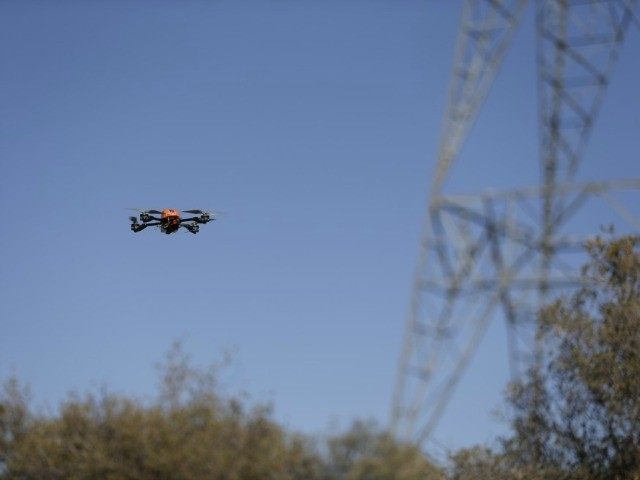It seems like a small event, but it may be recorded as momentous in the history books: for the first time in the United States, a package has been delivered by drone.
Specifically, it was a shipment of medicine, delivered to a free clinic in rural Virginia. Mashable reports partners in the project included an Australian drone startup called Flirtey, Virginia Tech, and NASA.
The operation kicked off with a fixed-wing aircraft, operated by NASA Langley Research Center pilots, carrying 24 packages of medicine from a pharmacy in Oakwood, Virginia to Lonesome Pine Airport in Wise. Flirtey’s smaller unmanned craft then hauled the medicine the remaining distance in multiple trips to the Wise County Fairgrounds, lowering its cargo via tether to near the clinic. Per Flirtey’s video, a single flight took around three minutes.
In February, the Federal Aviation Administration clarified its position on commercial drone use with an effective ban on drone delivery. An exception was made for Friday’s highly controlled event, after the Mid-Atlantic Aviation Partnership at Virginia Tech gained authorization for the research flights.
Although the distance covered wasn’t immense, Flirtey on Twitter called the plan’s success “a Kitty Hawk moment,” referring to the North Carolina town near where the Wright brothers succeeded in taking off in the first controlled flight in 1903.
“Proving that unmanned aircraft can deliver lifesaving medicines is an important step toward a future where unmanned aircraft make routine autonomous deliveries of your everyday purchases,” Matt Sweeny, Flirtey CEO said in a statement.
Flirtey posted a drone’s-eye video of the event:
The Verge quotes Sweeney saying that the technology for drone delivery services is ready to roll – only legal barriers and public perception remain, and he thought the Virginia demonstration project might be the first step in alleviating public apprehension about commercial drone use.
“In the early 1950s many people thought it was impossible to run a mile in under 4 minutes, until Roger Bannister broke the barrier,” said Sweeney. “The barrier turned out to be largely psychological and today that happens routinely. I think our achievement of the first approved drone delivery on US soil will break a psychological barrier.”
He went on to note that his own company is primarily invested in using drones to accomplish rural deliveries, while the ambitious plans of online retail giant Amazon.com envision drones buzzing over city streets to make same-day deliveries. Public and legal resistance to flying drones over sparsely populated areas is likely to erode first, although Sweeney optimistically predicted urban delivery services could be approved within two years, accompanied by the creation of “an entirely new division of Air Traffic Control” coming online to handle drone flight plans.
The L.A. Times reports that the Virginia medicine delivery project was “one of six in the nation approved by the FAA.”
Clearly there is still official and public resistance to the commercial-drone concept to overcome, as the L.A. Times also mentions that “traffic in the area was stopped so the drone never flew above cars or people.” It seems reasonable to assume that a fair number of successful tests under such controlled conditions will be necessary before regulators consider relaxing the restrictions against such flights.
That probably will happen, though.
Drones represent a fascinating intersection between the desire for technological convenience, and apprehension about autonomous machinery. The objections to drone use in domestic airspace, by either the government or private services, are easily rattled off: fears that they’ll malfunction and crash into people, concerns that they might be hacked and turned into weapons, the unappealing thought of low-altitude aerial congestion (imagine the sky over New York City buzzing with hundreds of delivery and surveillance drones!), and unease with the notion of so many tireless eyes in the sky keeping watch on us.
We’ve already had some uncomfortable public debates about the way security services can harvest data from electronic communications. Even if surveillance drones are not explicitly authorized for police, security, and rescue services, there will still be concerns that every one of those little machines zipping overhead with someone’s medicine or book purchase is gazing also down at us.
Measured against these concerns are the fabulous utility of drone aircraft, driven by increasingly cheap and powerful computer systems. Successful drone use by military forces overseas makes citizens a bit nervous about having that kind of technology operating in U.S. airspace… but it also stands as irrefutable testimony for how useful unmanned aerial vehicles can be. It is easy to imagine many situations in which police and rescue access to drone aircraft, or the ability to swiftly deliver vital supplies by drone, could save lives.
Drone advocates tend to describe the technology as an inevitable game-change whose utility will trump public apprehension, making future generations wonder why we took so long to approve its use. For the moment, much convincing remains to be done. Delivering medicine to remote customers in a matter of minutes is a convincing demonstration.

COMMENTS
Please let us know if you're having issues with commenting.